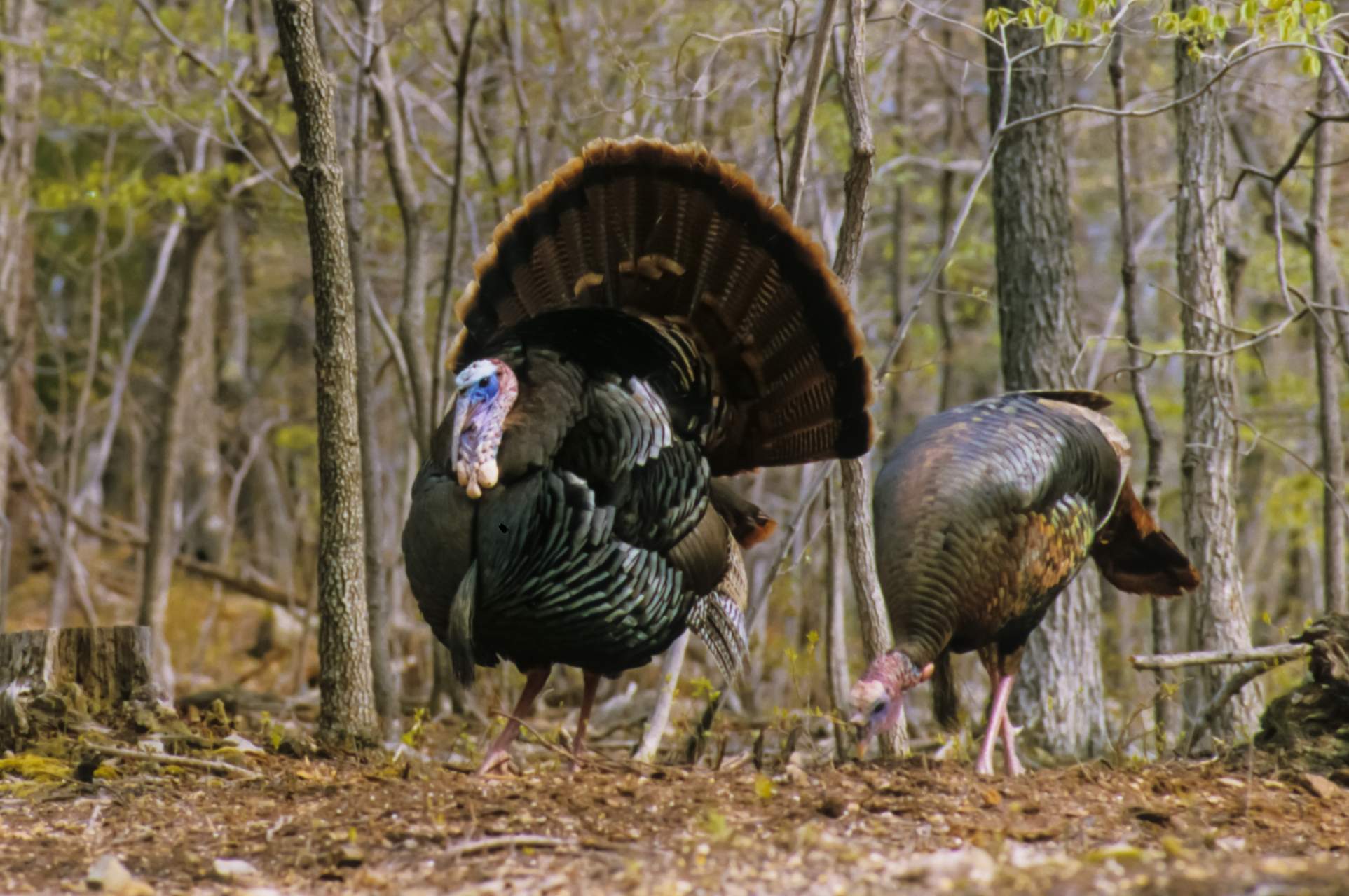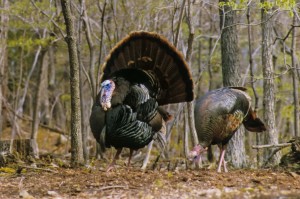Gobbler gurus strut stuff with spring turkey hunting tips
I recently spent an afternoon with Daymon Davis in Washingtonville.
Daymon has spent countless hours in the woods and an equal amount of time in immersing himself into the world of the Wild Turkey. Winning many titles and accolades for his turkey calling, I found Daymon to be very humble about his skills.
I asked him to help me become a better spring gobbler turkey hunter. He then gave me two hours of his lifetime experiences on this fascinating sport. Along with Daymon, two other seasoned veterans, Bob Betts and Barry Cooper, sat around the kitchen table and had lots to share.
As the three gentlemen started sharing their thoughts and stories on chasing this strutting bird, I soon found out that the more I learned, the more I wanted to learn. The desire of this group of men to help others become successfully turkey hunters was amazing. Please understand this is only a fraction of information for you to use and apply to what you already know and what you will learn in the future.
“How do I prepare to learn to be skillful at turkey hunting?”
Davis: “Let’s identify the different categories and start from there.
“First, let’s talk about preparing for hunting this wary bird. Learn their language! Listen to as many live birds as you can. You could visit a local farm, or purchase DVDs and there are lots of resources on YouTube.com. Find someone to teach you how to call and practice, practice, practice!”
Cooper: “Identifying your target by concentrating on these two things. Keep your sights on the colors of the gobbler (red, white & blue) and a beard.”
Betts: “Camo that gun. A turkey can spot anything out of the ordinary in the woods, a pair of white socks, your white neck if not covered completely.”
Davis: “More turkeys are not taken due to gun and ammo error than any other reason. You will be surprised when you pattern your shotgun, just how far off target you could be shooting. When patterning your shotgun, try many different combinations of choke tubes and shell combinations.
“Be sure to match the camo you are wearing to the surroundings. With so many types of camo on the market, it is easy to blend in perfectly.”
“When and how do I scout for turkeys?”
Davis: “I like to enter the woods in the early morning well before light and just sit and listen. No calling is necessary at this time, just listen. I love listening to the quiet solitude of the woods coming alive at daybreak.”
Cooper: “When I do locate turkeys, I don’t want to disturb or alert them.”
Davis: “Turkeys love to be able to oversee their territory. You will find them in key areas ridgelines, a knob, point or the end of a hillside. Logging roads and field edges are also great places to look for turkey sign like droppings, feathers or you might find a dusting site.
“What are some key things I need to know for the hunt?”
Davis: “Each and every hunt is different and don’t expect every hunt to be the same as the last.
“When you are travelling in the dark, knowing the woods is very important.”
Betts: “When teaming up with another hunter, understanding each other is vital.”
Davis: “The object is to get that gobbler to come to you. Don’t try to get too close, the sounds of your footsteps and the sight of a hunter is easily detected by this wariest of birds. When taking youngsters along hunting, ground blinds are a great help eliminating movement from the site of the bird. Placing a ground blind off of a field edge, just inside the woods, works really well.”
Cooper: “Identifying your target is critical in the spring gobbler season. Remember there are three rules of the hunt: don’t move, don’t move, don’t move!”
“Turkey calling seems a very complex art to learn!”
Davis: “The best turkey call is whatever the turkey wants to hear. Learn to use many different kinds of calls and sounds. There are box calls, mouth calls, slate/glass combo calls. The more calls you are good at, the better your chances are of getting him to come within gun range. There are many different locator calls one can use to get that gobbler to give away his location. You can use owl, crow, coyote, goose and pileated woodpecker calls.
“A shock gobble is a noise that is used to scare the gobbler while on the roost and get him to make a noise so you can hear him before he hears or sees you. You need to make the sound of what would be common to the area the turkeys live in.”
Betts: “It is very important to take your time when calling. If you think you are ready to call again, wait five minutes. Don’t be in a hurry to move to another area.”
“Turkey decoys are so lifelike, are they really necessary?
Davis: “There are times when decoys can be a negative. Some gobblers see the setup as a situation that he wants no part of. I like using one Jake decoy and one hen decoy. You are setting up a scenario where you want to call the Boss gobbler to come in and take the hen away from the Jake and keep your eyes on the Jake. When the dominant gobbler comes looking for a fight, he will head right for the Jake decoy. Placing your body and gun position on the Jake decoy will help keep you from any additional movement. Most often when I use decoys, I place them along field edges, pastures and tram and log roads.”
“Once I have successfully harvested the bird, what’s next?”
Cooper: “Once I have knocked a bird down, I immediately go to him so he doesn’t escape.
“Be careful if the bird is flopping, those spurs are like weapons. The next thing you want to do is tag him. A turkey cannot be legally transported unless a tag is on him. In the springtime, days often get very warm, so remember to keep your harvest cool so it doesn’t spoil. Protecting the feathers from being crushed, broken or even missing is very important if you are going to get your trophy mounted.”
Davis: “If turkeys could smell, we all would harvest a lot less turkeys!”
There are lots of experienced turkey hunters in our area. Get to know them and use them as a mentor.
A polite questioning attitude of “would you help me learn more about this sport?” is a great way to make a new friend, learn something new, and build memories that will last a lifetime.
Turkey hunting, like many other adventures in life we experience, is not about the destination, but the journey. Make your journey a safe one.
Email comments to cazrussell@ptd.net


